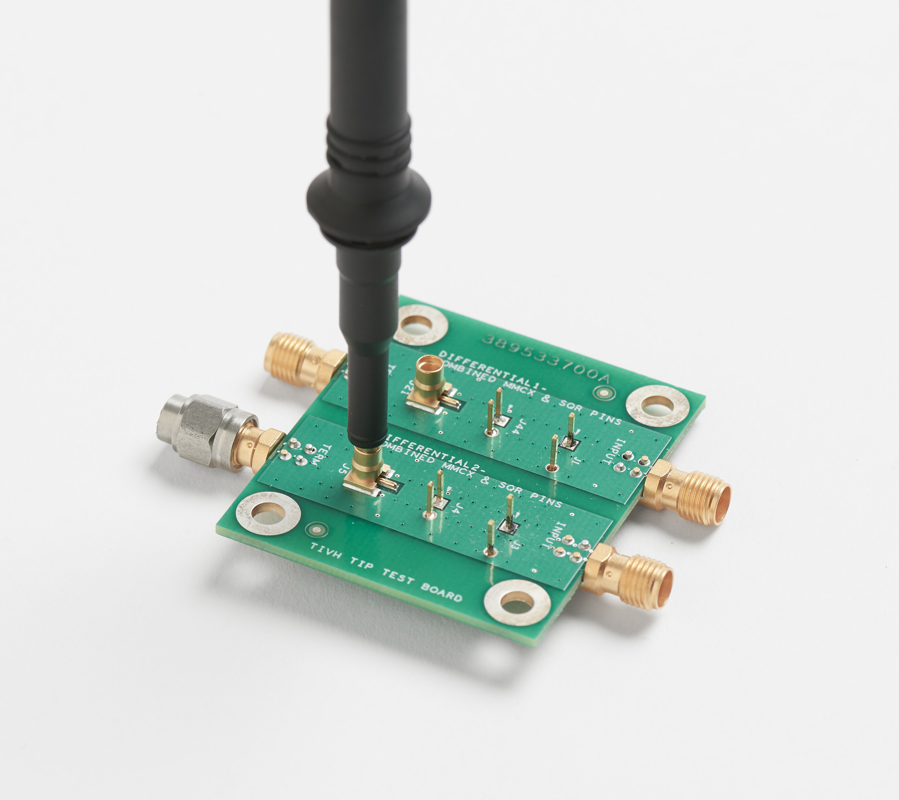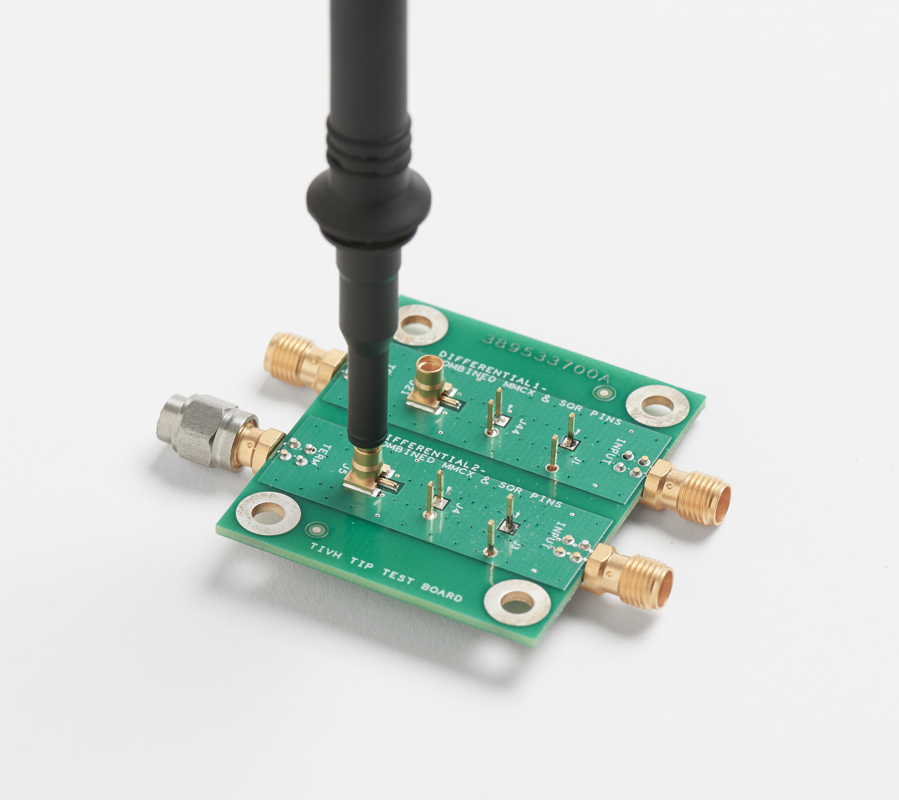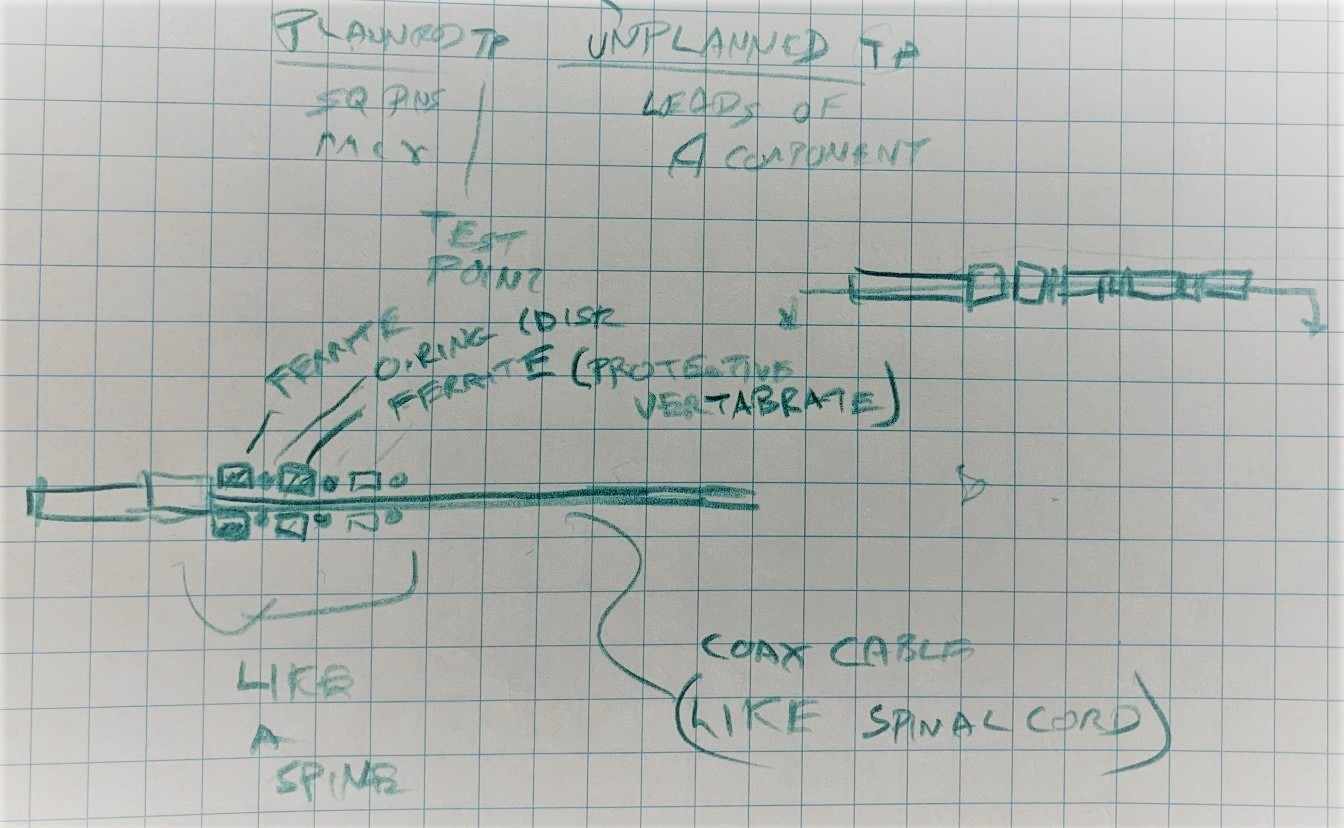

One of the biggest challenges power electronic designers face is connecting probes to circuit boards, maintaining both electrical and mechanical integrity. As components and modules continue to become smaller and smaller, the connectivity challenge will only become more difficult. How will you face this challenge? This blog will explore some of the current challenges in connectivity and some solutions, as well as the anticipated future of connectivity.
One of the biggest concerns with traditional probe tips is the flakiness in connectivity. There is always the danger of ‘blowing things up’ because of fat fingering probe tips on a live circuit, not to mention the safety of the engineers. We have all had some fireworks in our careers but when those fireworks cause project delays, three hours of breathing soldering fumes, (god forbid) trips to hospitals or (worst of all) OSHA trainings, we need a better solution, the ‘hands-free’ solution. NO! that does not mean we need a robot to make our connections, all it means is that once connected, our probes will stay put and give us accurate results without the aforementioned dangers (read day long health and safety trainings!). For the purpose of this blog, we’ll explore the “hands-free” connectivity approaches.

For both planned and unplanned test points, there are three things you want your connection to be: secure, reliable, and accessible.
Before we dig into what’s good, let's review all the ways we can connect a probe to a circuit: LV, HV, high frequency and current.
For Low Voltage, low frequency applications, most current solutions are adequate but for HV applications, especially that switch at high frequency, Tektronix, previously offered two accessories to securely attach the probe hands-free to a test board. They both have compromises.

- The BNC connector uses up significant board space and requires large vertical clearance.
- The circuit board adapter requires through hole mounting which can pose layout challenges.
The probes engineering team within Tektronix’ (along with a few Applications Engineers) worked with customers to come up with a new approach, based on industry standard MMCX connectors. These new connectors open a whole range of options that address both the electrical and mechanical challenges.
Electrically, the MMCX connectors are a well-suited interface for the bandwidth and CMRR requirements of numerous Tektronix power probes, based on your needs. Physically, MMCX connectors are small, inexpensive, and available in various form factors such as surface mount, through hole, 90 degree right angle, etc.
MMCX connectors have proven popular among Tektronix customers and we will continue to incorporate this connector into future designs. Currently, MMCX connectors are available on the general-purpose passive probes, the new TPR power rail probes, and the industry leading IsoVu isolated probes. For other products, MMCX adapters and accessories can be used.

The new TPR probes come with a standard accessories kit, as well as numerous optional accessories.
Obedient probes and connections help engineers to know precisely what it is that they are measuring, and to not think about other variables that get added to your measurement, like systems noise from your test equipment. It is important to think through your probe tip’s tiny connection on the DUT all the way back to the scope.

The above is a simplified example of the “obedient” nature of the cable construction of the tips and cables for the IsoVu Isolated Probes.
For example, it does not matter what the scope can do if the probe can’t reach, can’t connect, and can’t give you a clean fidelity signal through the system as a whole to get to the scope. It is what’s on the tip of your probe that matters. So, finding something that’s going to give a good repeatable signal is the key function to look for. Just as much as the scope and probe are a unit, the accessory to connect the DUT to the probe is just as important.
Consider Adding New Tools to Your Team
As the world of power electronic circuits gets smaller and more power dense, , as footprints are shrinking, as signals get harder and harder to reach, the tools available to you will be miniaturizing more and more. It is the great challenge of mechanical engineers to enable you to get into more intricate spaces. It is the probe’s challenge to make those tasks easier through best-in-class tips, spacing adapters, and more.
Remember: while every connector has its inherent problems and every connection has its issues (nothing is perfect!), your goal should be to achieve the best signal fidelity for your measurements: secure, reliable, and accurate. Accurate power supply measurement begins with your probe tip.


